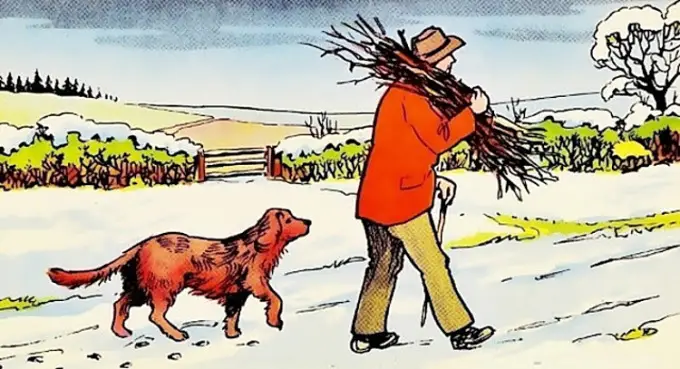Ever looked at an image and felt something was slightly off, but you just couldn’t put your finger on it? This intriguing visual puzzle is all about spotting the odd detail that seems out of place. You have just 10 seconds—are you up for the challenge? Let’s see how sharp your observation skills really are!

Why Are Visual Puzzles So Addictive?
Visual puzzles like this one tap into our natural curiosity and problem-solving instincts. They push us to see beyond the obvious, challenging our perception and focus. Most of us process visuals quickly, often relying on mental shortcuts to interpret what we see. These shortcuts, while efficient, can sometimes cause us to miss subtle discrepancies—like the one hidden in this image.
What to Look For: Common Pitfalls in Puzzles
Before diving into the solution, it’s helpful to understand why spotting the odd detail can be tricky. Here are some common pitfalls that might have tripped you up:
- Focus on the Most Obvious Elements: Bright colors, distinct shapes, or central figures often steal our attention, leaving less prominent details overlooked.
- Assuming Normalcy: Our brains like to fill in gaps, assuming that what we see follows the rules of logic or nature.
- Rushing Under Pressure: A 10-second timer can create urgency, causing us to scan too quickly without analyzing the scene carefully.
If you didn’t catch the oddity right away, don’t worry—it’s all part of the fun. Let’s break down the puzzle step by step to reveal the hidden detail.
Breaking Down the Puzzle: What’s Unusual?
Take a closer look at the scene in question: a snowy landscape featuring a man and his dog walking down a path. At first glance, everything appears perfectly normal—but is it really?
Step 1: Examine the Ground
Snow is the perfect medium for revealing movement. Every step leaves behind a clear imprint—whether it’s paw prints from a dog or footprints from a human. Start by observing the snowy trail.
Step 2: Compare the Tracks
The dog’s paw prints are clearly visible, forming a trail behind it. But what about the man? Look closely—he’s walking alongside the dog, yet there are no footprints to indicate his presence.
Step 3: Analyze the Context
This detail doesn’t make sense. If the dog leaves paw prints, the man should also leave footprints. The absence of footprints defies logic and makes this the standout oddity in the image.
The Big Reveal: The Man Has No Footprints

That’s the twist—while the dog has left a clear trail in the snow, the man hasn’t left any footprints. This subtle inconsistency is easy to miss if you’re focused on larger details like the man’s attire or the snowy background. It’s a clever play on our assumptions about how things “should” work in real life.
Why Do We Overlook Details Like This?
The human brain is wired to focus on the bigger picture, often glossing over minor details. Here’s why:
- Selective Attention: We filter out information that seems irrelevant, concentrating instead on prominent features like the man and his dog.
- Cognitive Shortcuts: Our brains rely on patterns and expectations to process information quickly. In this case, we assume the man is leaving footprints because that’s what people do in snow.
- Time Pressure: When faced with a time limit, we prioritize speed over thoroughness, making it harder to spot subtle inconsistencies.
This puzzle is a great reminder that sometimes, it pays to slow down and question what we see.
How Did You Do? Share Your Experience!
Were you able to spot the missing footprints within 10 seconds? If so, congratulations—you’ve got a sharp eye for detail! If not, don’t be discouraged. Visual puzzles are all about practice, and every attempt helps sharpen your observation skills.
Encourage your friends and family to try this challenge. You might be surprised at how differently people approach the same puzzle. Sharing your thought process can also help others see things from a new perspective.
Why Visual Puzzles Are Good for Your Brain
Beyond being fun, puzzles like this offer several cognitive benefits:
- Improved Focus: Training your brain to zero in on subtle details can enhance your concentration in everyday tasks.
- Better Problem-Solving: By analyzing inconsistencies, you develop a sharper ability to identify and resolve issues.
- Increased Mindfulness: Puzzles force you to slow down and be present, making them a great exercise for mindfulness.
Incorporating puzzles into your daily routine is an enjoyable way to boost mental agility and attention to detail.
Ready for More Challenges?
If this puzzle got your brain buzzing, why stop here? There’s a whole world of visual puzzles, logic challenges, and brain teasers waiting to be explored. Each one offers a fresh opportunity to test your wits and refine your skills.
Whether it’s spotting differences in two seemingly identical images or solving riddles that require lateral thinking, these challenges are guaranteed to keep your mind sharp. And the best part? They’re a lot of fun!
Conclusion: Embrace the Joy of Discovery
This puzzle reminds us of the joy in noticing what’s often overlooked. By slowing down and paying closer attention, we can uncover the unexpected—even in the most ordinary scenes. So, next time you come across a visual challenge, take your time, trust your instincts, and enjoy the thrill of discovery.
Now that you know the answer, why not share the puzzle with others and see if they can spot the oddity? It’s a fun way to spark conversation and challenge your observation skills together. Keep looking, keep questioning, and most importantly, keep having fun!